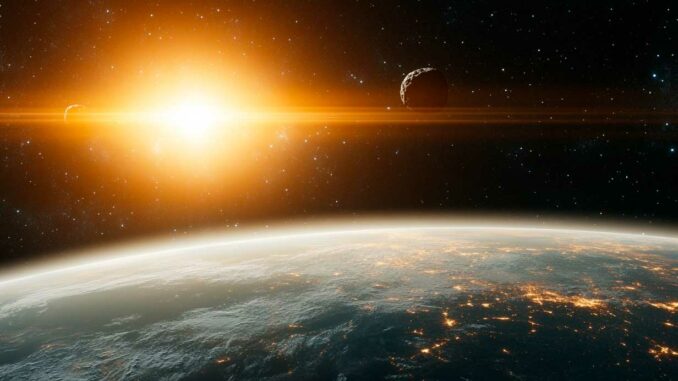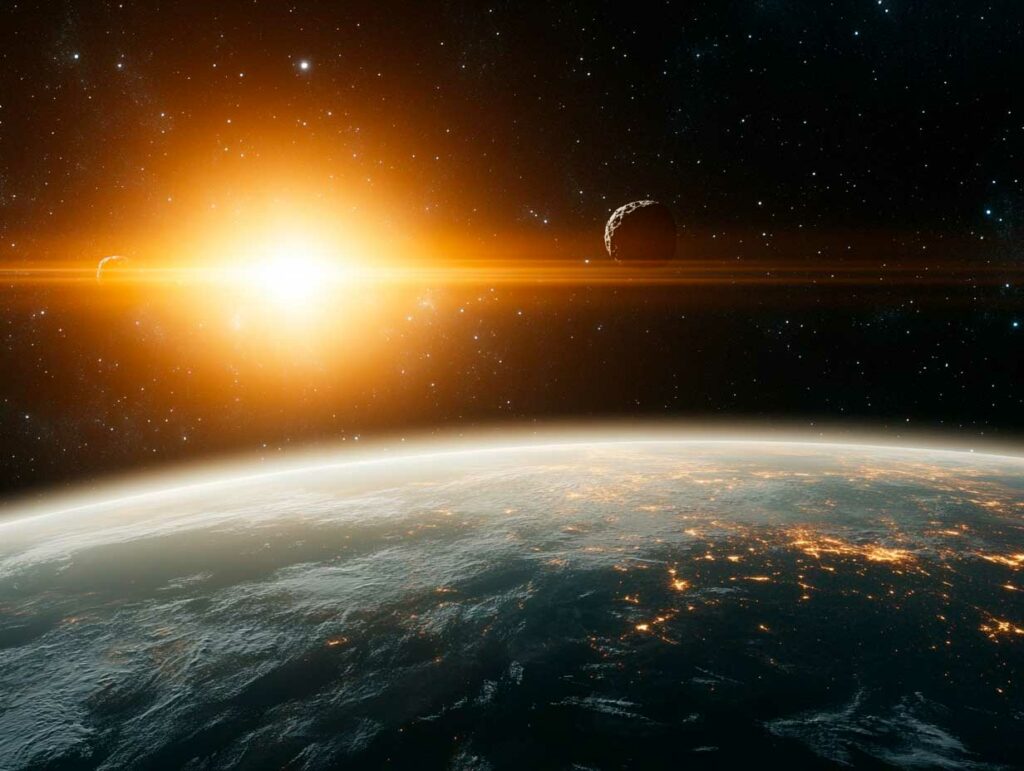
Trump’s proposed budget cuts NASA’s planetary defense funding by 47%, jeopardizing the NEO Surveyor program.
The Trump administration’s 2026 budget proposal includes a historic 24% cut to NASA’s overall budget, and up to 47% for science programs, including planetary defense. During a hearing before the US Congress on May 15, representatives expressed serious concerns about what many described as a direct threat to the United States’ ability to detect and prevent asteroid impacts. The NEO Surveyor program, designed to identify dangerous near-Earth objects using infrared technology, could be compromised. The question is clear: can we afford to ignore a natural threat that is both predictable and preventable?
NEO Surveyor: a key mission for planetary security
The Near-Earth Object Surveyor is a space telescope currently under development, scheduled for launch by 2028. Its mission is to detect and characterize near-Earth asteroids (NEOs), particularly those that cannot be detected from the ground.
Its main features include:
- Use of infrared to detect dark, non-reflective objects, unlike traditional optical telescopes;
- Precise determination of the diameter and trajectory of detected objects;
- Complementarity with deflection missions such as DART, which proved in 2022 that it is possible to change the trajectory of an asteroid.
The example of the Chelyabinsk asteroid, which exploded over Russia in 2013, demonstrates the urgency of this type of detection: energy equivalent to 440 kilotons of TNT, more than 30 times Hiroshima, was released without warning. However, this object had not been seen because it came from the direction of the sun, which is the blind spot of ground-based instruments.

A budget in free fall: concerns in Congress
According to the White House budget proposal, NASA would suffer:
- a 24% reduction in its overall budget,
- and a 47% cut in scientific programs, including asteroid monitoring.
If approved by Congress, these figures would represent the largest annual budget cut in NASA’s history. Several elected officials have expressed their opposition:
- Valerie Foushee (D-North Carolina) spoke of a strategic surrender that would jeopardize national security.
- George Whitesides (D-California) asked whether it was not time to increase funding for planetary defense instead of reducing it.
- Zoe Lofgren (D-California) denounced an erosion of scientific expertise, exacerbated by mass layoffs in federal agencies such as NOAA.
Some also fear the potential closure of vital centers, such as the Goddard Space Flight Center (Maryland) and the NASA Ames Research Center (Silicon Valley), which would compromise the emergency expertise provided to FEMA in the event of a threat.
Asteroid tracking: current status and outlook
Currently:
- Approximately 38,000 near-Earth objects are known, of which 2,500 are classified as potentially hazardous.
- The Minor Planet Center, led by Matthew Payne, tracks their orbits and provides alerts.
- The NEO Surveyor would improve this monitoring, particularly for the 35 to 40% of asteroids known as “dark”, which are difficult to detect using current methods.
Scientists also insist on the need to integrate artificial intelligence into detection tools:
- To speed up orbit analysis,
- To reduce the risk of human error,
- And to respond more quickly to an object detected on an impact trajectory.
But this implementation requires significant funding. When asked about this, Nicola Fox, NASA’s director of science missions, replied that current resources are insufficient to ensure this development.
A real but neglected threat
As Brian Babin (R-Texas), chairman of the committee, pointed out, an asteroid impact is a preventable natural disaster, unlike earthquakes or tsunamis. He reiterated that:
“Planetary defense is knowing what’s out there and what can harm us.”
The danger is statistically low but potentially catastrophic. In 2024, asteroid 2024 YR4 briefly caused concern among scientists before its trajectory was reassessed. This type of alert shows that the threat is real and that the ability to respond to it depends on constant investment in space observation.
Budget cuts would threaten:
- the recruitment and training of specialized scientists,
- the maintenance of orbital tracking infrastructure,
- and the ability to respond when a dangerous object is detected.
What does the future hold for US planetary defense?
The final 2026 budget has not yet been adopted, and discussions in Congress suggest strong bipartisan opposition to the planned cuts. If approved, NASA could:
- rely on its international partners, such as ESA and CNES,
- but lose its leadership in a strategic area of space security.
Nicola Fox concluded the hearing with a significant remark:
“If we can’t come together when faced with a giant rock threatening the planet, what can we come together for?”
Planetary defense is one of the few scientific fields where the benefits are global and the means to prevent disaster exist. But we still need to decide to fund them.
War Wings Daily is an independant magazine.